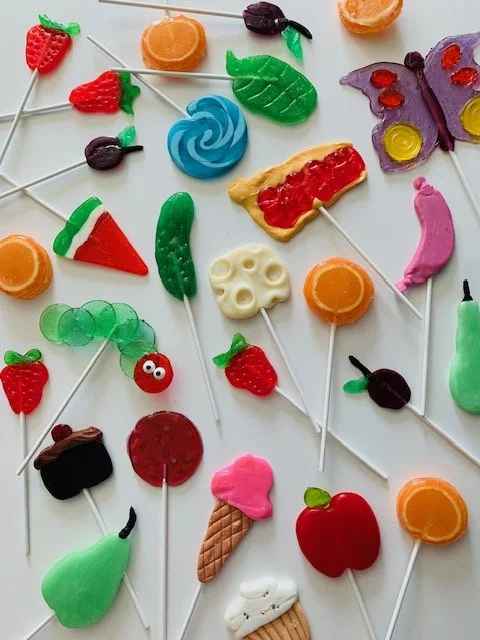More Than You’ll Ever Want To Know About Corn Syrup
When it comes to making candy, there’s one ingredient that shows up in recipe after recipe — corn syrup. But why is it such a staple in the candy world? Is it just sugar in disguise, or is there some sweet science behind it? Let’s unwrap the mystery of corn syrup and talk about what it actually does, the different types you might come across, and why high fructose corn syrup gets a bad rap.
What Is Corn Syrup, Really?
At its core, corn syrup is a liquid sweetener made by breaking down cornstarch into glucose (a type of sugar). It's thick, sticky, and clear — and it plays a crucial role in candy making.
Think of corn syrup as the unsung hero of smooth, glossy, not-a-crystal-in-sight candy. It’s not just about adding sweetness — it's about texture, stability, and preventing sugar from turning into a crunchy, gritty mess.
Why Use Corn Syrup in Candy Making?
Candy making is basically sugar chemistry. When you cook sugar and water together (like for lollipops or caramels), the sugar wants to recrystallize as it cools. That’s fine if you’re making rock candy — not so great if you want silky caramels or glassy hard candy.
Corn syrup steps in like a candy bodyguard. Its glucose molecules interfere with the sucrose (table sugar) molecules and help stop them from forming crystals. The result? Smooth, shiny candy that won’t go grainy on you.
Here’s what corn syrup does in your candy:
Prevents crystallization
Adds a chewy or smooth texture
Makes candy glossy
Helps control sweetness (surprisingly, it's less sweet than sugar!)
The Different Types of Corn Syrup
Not all corn syrup is created equal. Here's a quick breakdown:
1. Light Corn Syrup
This is the go-to for most candy recipes. It’s clear and mildly sweet, with a touch of vanilla added. Great for:
Lollipops
Caramels
Marshmallows
Nougat
2. Dark Corn Syrup
This one has molasses and caramel flavoring added in. It's thicker and richer in flavor — almost like a mild treacle. Great for:
Pecan pie
Toffees
Old-fashioned candies
Both types work the same way chemically, but the flavor will vary.
What About High Fructose Corn Syrup?
Ah yes, HFCS — the controversial cousin.
High fructose corn syrup is made by taking regular corn syrup (mostly glucose) and converting some of that glucose into fructose using enzymes. The result is a much sweeter syrup — about as sweet (or sweeter) than regular sugar. It’s commonly used in sodas, processed snacks, and packaged foods.
So why do people side-eye HFCS?
It’s associated with highly processed and low-nutrition foods.
Some research links it to obesity and metabolic issues (though this is still debated).
It’s often used in products as a cheap sugar substitute, which some folks don’t love.
How to Tell If Corn Syrup Has High Fructose
When you’re shopping for corn syrup for candy making, check the ingredient label. You’re looking for a single ingredient: “corn syrup”.
If the product contains high fructose corn syrup, it will clearly say so on the label — usually listed as:
“High fructose corn syrup”
Or sometimes “glucose-fructose” (common in Canadian labeling)
Popular brands like Karo Light Corn Syrup are not high fructose corn syrup. They contain regular corn syrup only (glucose), making them perfect for candy making.
Can I Substitute Something Else?
If you’re trying to avoid corn syrup, there are substitutes like:
Glucose syrup (nearly identical to corn syrup, but made from other starches)
Honey (though it adds flavor and may not prevent crystallization as well)
Golden syrup
Brown rice syrup
Just note: swapping out corn syrup can change your candy's texture, stability, or crystallization risk. For foolproof results — especially when just starting out — sticking with corn syrup is your best bet.
Corn syrup isn’t the villain it’s sometimes made out to be — at least not in small-batch, homemade candy making. It’s a kitchen chemist’s best friend when you want glossy, chewy, smooth sweets that last. And when you’re using it for its functional properties (not as a hidden sweetener in every processed food), it’s a pretty sweet tool to have in your candy toolkit.
Hey, I’m Kim!
After a lot of practice (and a few sticky disasters), I’ve crafted a delicious selection of lollies and mastered a ton of candy making tips to share with you—lump free. (You’re welcome.)





